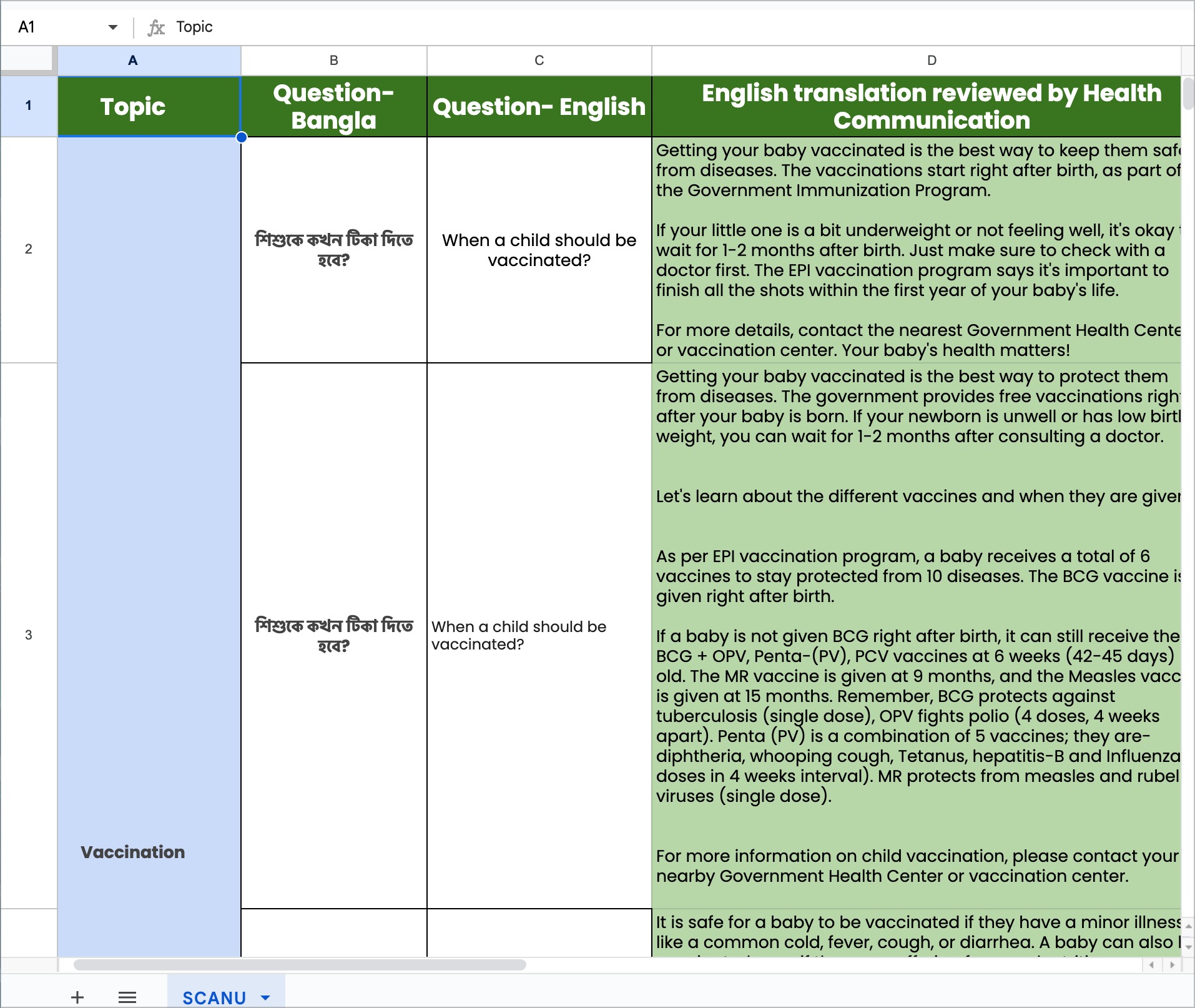Current State
FAQ Bank Search
Action: Before escalating the query, the MSE searches the medical archive to check if there is an existing answer to the user’s question. This step is crucial for efficient query resolution, reduced turn-around-time as well as minimizing escalations.

The image above is a screenshot from the medical archive which is used to search for existing answers. The most common challenges here are identifying the right entry. The MSE performs a search-and-retrieve by identifying subject keywords and then finding the right response. Owing to the overall time consumed to identify the right response, they sometimes provide a new response all over again. This adds redundancy into the medical archive.
Outcome
If an answer is found, it’s prepared to be sent to the user. If not, the MSE proceeds to the next step.
Tools/Systems Used
Medical archive (Internal FAQ Bank)
Escalation for Unanswered Questions
| Step | Description |
|---|---|
| Initiation | The Medical archive does not contain an answer |
| Translation request | The MSE raises a request to translate the query into a language that the doctor can understand |
| Doctor escalation | Once translated, the query is escalated to a doctor for a professional medical response. |
| Waiting for response | The MSE waits for the doctor’s response, monitoring the ticket status |
| Translation of doctor's response | Upon receiving a response, the MSE raises another request to translate the doctor’s response back into the user’s language. |
Translation might not be a necessary step for all requests. For instance, in Bangladesh we don't have a step for translation of the requests, as the responses are collected in the same language format. However, we have a back-translation loop in place for documentation as well as inputting it to the LLM for embeddings.
Outcome
The translated response is sent back to the user, resolving their query.
Tools/Systems Used
Translation services, doctor communication portal, and the ticketing system for tracking.